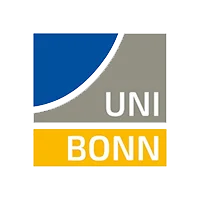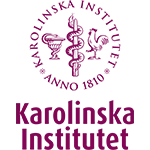Explore the credit course catalogue
33 Results

This workshop provides a hands-on learning experience with a focus on a wider variety of AI tools, their ethical implications and their practical applications. The aim is to facilitate the responsible and efficient use of AI-based tools in research and academia.
Content:
- Understand the importance of using AI in research and academia and assess the benefits and risks involved
- Craft effective prompts for your research tasks
- Develop strategies to integrate AI tools into your research workflow
- Stay informed about and adapt to new developments in the field of AI
At the end of the workshop, you will receive a list of generative AI prompts useful in research and academia. There will be practice sessions during the workshop for which you will need access to AI tools, particularly ChatGPT/GPT-4o. If you do not have an account with ChatGPT/GPT-4o, alternatives like Microsoft Copilot, Google Bard or Claude.ai could also be used.

In the workshop “Fit for AI - Prompting for advanced users” you can get to know and try out prompting tips and techniques. You will learn about prompting techniques such as Few Shot Prompting, Chain-of-Thought Prompting and others. You can try out these techniques directly on various tasks and your own examples.

This seminar focuses on the increasing importance of Artificial Intelligence (AI) in academic research and writing, providing practical insights into AI technologies; use in these areas.The workshop explores ChatGPT and prompt engineering, as well as other academic AI tools to aid research and writing, examining both benefits and challenges. Ethical aspects, such as copyright and authenticity of research results, are discussed, with the goal of equipping participants with practical knowledge and skills to effectively utilize AI in daily research through interactive elements like case studies and group discussions.

The course is practical and aims at teaching students how to:
- Use the programming environment R and RStudio, which includes installation, how to handle errors, problem solve and access helper documents.
- Use basic concepts of programming, such as data types, logical and arithmetic operators, if else conditions, loops and functions.
- Use common R packages to perform basic statistical analysis (e.g., t-test, chi2-test, correlation) and visual presentation (e.g., boxplot, histogram and heat-map) of data in R.
The course is structured with the intent to gradually make students more autonomous in writing code. Starting by introducing a concept through a lecture, then providing formative quizzes and tasks relateed to the concept. This all leads up to a project (exam) where the student gets to combine multiple concepts into a project with the intent of solving a certain problem or displaying specific statistical tests of visual components.

Do you need to turn data into a publication figure? We offer tools and confidence for the student to independently select a statistical method for research questions in their field. The course is practical and includes implementing a basic statistical analysis in R, the leading statistical programming language in bioinformatics and medical science. Furthermore, we give a brief introduction to visualization in R, with a focus on R/ggplot2. Students can bring data from their own research project, or work on data from the course.

The course content lean on Design thinking ideology and methodology that inform research as well as developmental work and form a practice-based foundation for innovation aimed to meet the needs of societal and scientific environments. As a student, you work individually from your own research perspective, and get helpful insights for future research.
The course apply a problem-oriented teaching and learning style, with a pedagogy that enables students to take active responsibility for individual and also group learning in a multi-disciplinary context.

Progress in medical innovation stands as a catalyst for worldwide economic growth. Whether within pharmaceuticals, medical devices, biotechnology, information technology, or a fusion of these advancements, the potential advantages extend significantly to private businesses and societal well-being. However, due to long development times and rigorous regulations, these innovative concepts require a lot of financing to establish their presence in the market. Consequently, assessing the value of novel medical innovations remains crucial. The primary objective of this course is to empower researchers with the proficient capability to effectively assess the worth of emerging technologies or processes within the medical industry.

The course aim is that the doctoral student develops a theory of science approach by enabling the doctoral student to understand, employ, reflect upon and critically assess concepts and ideas of theories of science as well as their implications for in particular medical scientific practice. A further aim is to enable the doctoral student to understand, reflect upon and critically assess views on and implications of definitions of health and disease.

Dive into the cutting-edge world of nuclear medicine with this comprehensive course that blends theory and hands-on practice. In this one-week course, you will gain invaluable knowledge and skills at the forefront of medical imaging and targeted radiopharmaceutical therapies.
This course offers a unique opportunity to:
- Master the fundamentals of radiation physics and biology
- Explore state-of-the-art diagnostic and therapeutic applications in oncology and neurology
- Gain practical experience handling radiopharmaceuticals in a laboratory setting
- Understand the latest developments in personalised medicine using radioactive tracers
Upon completing the course, you will be allowed to handle radiopharmaceuticals and open radioactive sources at Karolinska Institute and Karolinska University Hospital.

The course is designed to provide students and researchers with a solid understanding of functional Near-Infrared Spectroscopy (fNIRS) as a relatively new tool to measure brain activity and will emphasize both theoretical knowledge and practical skills of fNIRS. The students will gain expertise in the underlying principles of fNIRS, its instrumentation, and various analytical approaches. The primary goal is to empower students with the knowledge of this additional neuroimaging tool to design and execute advanced experiments, interpret fNIRS data effectively, and contribute to cutting-edge research in neuroscience and related fields.

The main purpose of the course is to provide the students with a solid understanding of the tools available to analyze brain structural data measured with structural magnetic resonance imaging (sMRI). The students will develop the ability to critically review results provided by different methods, to select the most adequate tools and experimental designs to answer different questions and to compare their relative advantages.

The course will introduce neuropsychological assessment in an aging population, focusing on age-related cognitive changes and their neural correlates. An additional purpose is to increase understanding of cognitive aging and how to differentiate between non-pathological cognitive aging and early signs of pathology. After the course, you will be able to define and describe common neuropsychological concepts and measurement techniques and demonstrate an overall understanding of neuropsychological investigation methodology and cognitive diagnostics in aging. The course will give you an increased understanding of cognitive aging and the complexity of differentiating between “normal” and early-stage pathological aging.

The course is aimed for you who want to get an understanding of the principles of PET, the methodology used for neuroreceptor imaging and quantification, as well as to get an insight in important research ongoing in the field and in the clinical applications of PET.

The course covers the theoretical background to the brain imaging methods sMRI, fMRI, PET, EEG and MEG, such as what aspects of the human brain's structure and function they register, and the operation principles of the imaging instruments. The coursed gives the student a good understanding in how the different methods are used within in academic research as well as within health care. The course also addresses how the imaging methods can be combined in multimodal analyses, and discusses the interplay between development of theory, instrumentation, method, and applications.
The course begins with an introduction to brain imaging methods within neuroscience. In separate course modules, the course then offers the student a deeper understanding of the different methods sMRI, fMRI, PET, EEG and MEG, as well as combining them in multimodal brain imaging. Finally, the students will deepen their knowledge on a topic of their choice in an individual study project.

This course aims to introduce students to health care organization and management, and how this affects public health. There is a special focus on the opportunities offered by digitization and how these can be utilized in quality and improvement work.

The purpose of the course is to introduce the topic of artificial intelligence (AI) in mental healthcare focused on theoretical development, ethics and practical application informed by a scientific approach.

This course will elevate your AI proficiency, preparing you to actively engage in the digital evolution of healthcare. It offers a comprehensive perspective on the healthcare shift, steered by medical necessities, and bolstered by innovative artificial intelligence solutions.

This course provides students with in-depth knowledge in the field of digital health from an entrepreneurship perspective. Domains of digital health, needs-based innovation including prototyping, usability and testing as well as data management, intellectual property, reimbursement, business models, ethics and future trends will be discussed and analyzed.

Topics covered include:
- Computational design strategies
- Differential equations
- Programming in Python
- Data analysis

Topics covered include:
- Coding: basic concepts, practical training, testing
- Foundations of sensor technologies
- Foundations of Bluetooth communication
- Usage of advanced programming interfaces (APIs)
- Analysis of time series data
- Introduction to machine learning techniques

Topics covered include:
- Coding: theory, practical training, coding styles, unit testing
- Collaborative software development workflows
- Data analytics workflows
- (Generalised) linear mixed effects models
- Bayesian statistics
- Data visualisation
- Workflow automation
- Meta-science

Topics covered include:
- Reconstruction of neuron morphologies
- Histological preparation of brain tissue
- Electrophysiological recordings of single neurons in vivo
- Simulations of cellular function via multi-compartmental neuron models

This course covers acquisition and advanced analysis of MRI-data in clinical research including scanning
routines, tractography, tract-based spatial statistics, voxel-based morphometry and
support machine vector programming.

Topics covered include:
- Electrophysiological recording techniques
- Design of cognitive paradigms
- Spike detection and spike sorting
- Peri-stimulus time histograms
- Data analysis and statistical evaluation

Topics covered include:
- Basics of MRI and functional MRI
- Design of psychological experiments
- Analysis of functional MRI data
- Functional Neuroanatomy

Topics covered include:
- linear and nonlinear time series analysis methods for the characterization of complex dynamical systems
- statistical tools
- analysis of biomedical data (e.g. EEG, structural/functional MRI data)

This course will cover:
- Intro to Jupyter Notebooks, IDEs
- Intro Python (loops, variables, functions)
- Core packages (Numpy, Pandas, Matplotlib, Seaborn)
- Accessing folders (shell, OS)

The module presents a variety of fundamental models and methods from computational neuroscience. By solving daily exercises the students learn how to practically apply the acquired concepts. The course introduces the employed more
advanced mathematical tools embedded into the different topics. Further there will be a pre-course teaching the required programming skills in python.

The Statistics module covers:
Basic test theory; 2-tests for contingency tables; t-Test; non-parametric tests; analysis of variance (ANOVA); multiple testing; power calculations; calculation rules for probabilities and neurobiological applications; guidelines for choice of analysis strategy; software implementations; effect size based hypothesis testing
The Scientific writing module:
- Introduction into general guidelines and rules for scientific writing
- Introduction into the elements of style
- Analysis and discussion of scientific texts
- How to improve and correct a text
- Practices in writing. Students will write their own texts and correct and make suggestions for improvements of the texts of others
Research ethics module covers:
- Main approaches and methods in current research ethics
- Ethical standards of good scientific practice
- Ethical issues related to research with humans
- Ethical issues related to animals
- Ethical issues related to research with biological material


